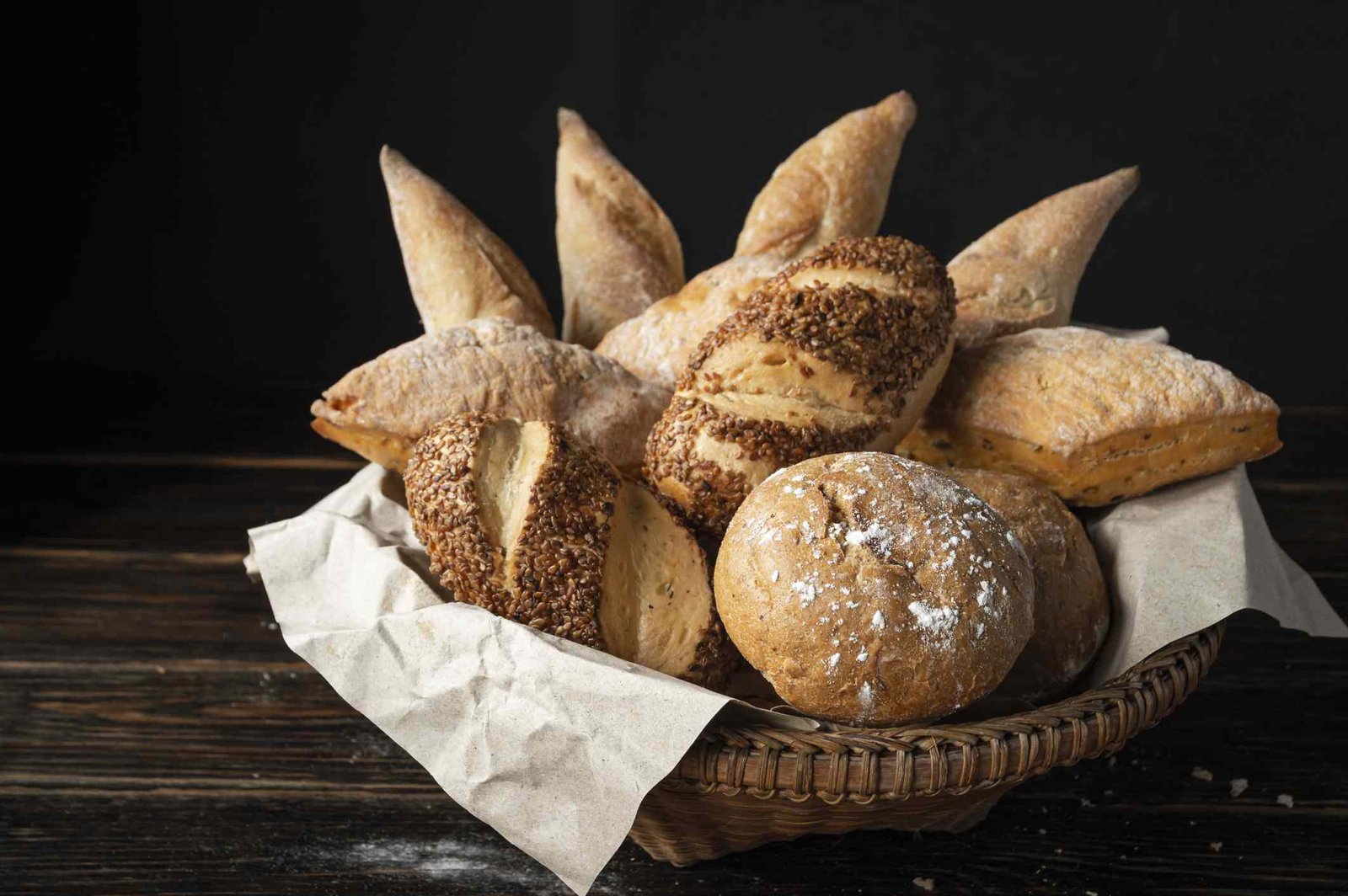
Sourdough is a tangy, fermented bread that offers several health benefits, including better digestibility and increased bioavailability of certain nutrients.
Though sourdough is tasty and nutritious, there are many other breads that can fit into a healthy diet.
Sprouted breads are breads that are made with sprouted ingredients, like grains, legumes, and seeds.
“Sprouted breads are considered ‘pre-digested,’ which makes them easier on the digestive system,” Charlotte Abbate, MS, CNS, CDN, a Certified Dietitian Nutritionist, told Health. The sprouting process reduces levels of antinutrient compounds, like phytic acid, which interfere with the bioavailability and absorption of minerals. This improves the accessibility of nutrients like iron and zinc found in sprouted breads.
“Sprouted breads also tend to have a lower glycemic index (GI),” said Abbate. The sprouting process reduces the digestibility of starch, which lowers the GI of sprouted products, like bread. This makes sprouted breads a smart option for those looking for blood sugar-friendly alternatives to refined carbs, like white bread.
Multigrain breads, such as those made with grains and seeds, are higher in protein and fiber than refined breads, like white bread.
Kelly Jones MS, RD, CSSD, board-certified sports dietitian, recommends choosing multigrain bread, like Dave’s Killer Bread Powerseed Bread. “This bread provides 5 grams of protein and 4 grams of fiber per slice, along with just 1 gram of sugar from organic fruit juices,” said Jones.
“The high fiber and protein content of multigrain bread helps slow down digestion, promoting feelings of fullness and better blood sugar responses,” she said.
Oat bread is bread made from oats, which are a good source of fiber, including a type of soluble fiber called beta-glucan.
Beta-glucan blocks cholesterol absorption in the digestive tract and increases its excretion through the stool, which helps lower cholesterol levels. Eating more oat products, like oat bread, may improve blood lipid levels and may also reduce blood sugar, body weight, and blood pressure, all of which can benefit heart health.
Whole wheat bread is made from whole wheat flour, which contains the entire wheat kernel, including the germ, the endosperm, and the bran. The bran and the germ contain important nutrients, such as fiber, iron, and B vitamins.
This makes whole wheat bread higher in nutrients, like protein and fiber, than refined white bread, which is made from refined grains that have had their germ and bran removed.
Jones recommends One Degree Organics Ancient Whole Wheat Bread. “This bread contains 5 grams of protein [per slice] along with 2 grams of fiber and only one gram of sugar,” she said. Jones like that One Degree also uses sprouted wheat to enhance nutrient bioavailability.
Quinoa bread is made with quinoa, a high-protein, gluten-free pseudocereal. Quinoa provides 8 grams of protein per cup and is also high in fiber.
Protein and fiber help you feel full after eating and can also support healthy blood sugar levels by slowing the release of sugar into the bloodstream.
Flaxseeds are high in important nutrients like fiber, copper, magnesium, and selenium.
A two-tablespoon serving of whole flaxseeds provides 5.6 grams of fiber, which can support digestive health by encouraging regular and comfortable bowel movements and promoting the growth of beneficial bacteria in the digestive tract.
Try adding flaxseed to your homemade breads to boost their nutrient content, or choose breads made with flaxseeds when shopping at the grocery store.
If you’re following a grain-free diet, like the paleo diet, you’ll want to choose grain-free breads, such as almond flour bread.
Almond flour is a good source of fiber and protein, naturally gluten-free, and safe for grain-free diets. It is also low in carbohydrates and rich in vitamins and minerals, like vitamin E and magnesium.
Almond flour bread is easy to make at home, using simple recipes such as this one, and can also be purchased pre-made at the grocery store.
Sourdough is made through a fermentation process that involves naturally occurring yeasts and lactic acid bacteria, which results in a tangy-tasting, chewy bread.
“The fermentation process allows for easier digestion for some individuals with gluten sensitivity, as well as a slightly better blood sugar response than white bread,” said Jones.
The fermentation process used to make sourdough produces lactic acid and acetic acid, which slow the absorption of starch in the digestive tract, resulting in a slower rise in blood sugar.
The fermentation process that sourdough undergoes reduces levels of gluten and increases the bioavailability of certain nutrients, like iron.
Sourdough has also been shown to have lower levels of phytates, tannins, trypsin inhibitors, and Fermentable Oligo-, Di-, Mono-saccharides, and Polyols (FODMAPs), which are compounds known to cause digestive issues in many people, such as those with irritable bowel syndrome (IBS). Because of this, sourdough may be easier to digest and trigger fewer gastrointestinal symptoms than commercially leavened bread.
Sourdough bread is a healthy option, but there are plenty of other breads that are packed with nutrition and offer unique health benefits.
Sprouted bread, multigrain bread, oat bread, whole wheat bread, quinoa bread, flaxseed bread, and almond flour bread are excellent options if you’re looking for a nutritious and delicious sourdough substitute.






